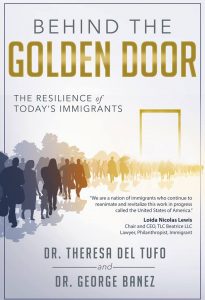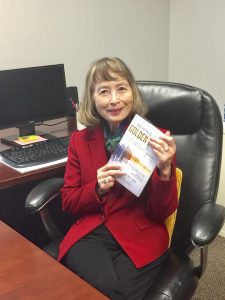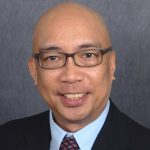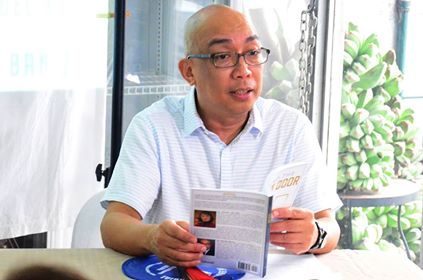“Give me your tired, your poor,
Your huddled masses yearning to breathe free,
The wretched refuse of your teeming shore.
Send these, the homeless, tempest-tost to me,
I lift my lamp beside the golden door!” Emma Lazarus (1883)
America, the New World. Land of promise and opportunity. Refuge for peoples seeking to escape poverty and oppression, seeking a fresh start, a better life. What is America, the United States of America today, but a nation built by waves upon waves of immigrants seeking to fulfill their “American Dream”?
And yet, today, an atmosphere of resentment against immigrants has crept over the US, bringing with it fear, uncertainty and insecurity, felt both by those who see themselves as “Americans” and those who are seen as “immigrants”. Today, there is open racism, sexism and xenophobia raging through American society. All this, largely due to the Trump narrative that immigrants are taking away jobs from legitimate Americans. Immigrants like Mexicans are rapists, gangsters and drug dealers. A wall must be built. Crime and violence are caused by immigrants and refugees. Their entry, especially Muslim nationals from certain countries, must be banned or restricted. They must be deported, especially those whose status is questionable, like the Dreamers. Immigration policy must be changed to keep the country safe from terrorists. Immigrants are being painted as the “enemy”, as the cause for American society’s woes. Go back home is the rhetoric of the day. We all know this story.
Against this backdrop, two immigrants from the Philippines, legal, naturalized citizens of the USA, have written a book, a compilation of the personal stories of immigrants from nine countries as a contribution towards changing this narrative.
Immigration defines and shapes America. It is this culture of diverse peoples coming together with the grit and tenacity to build a better life, bringing with them their hopes and aspirations for a free and just society with equal opportunities, that is its backbone.

Through these stories, the authors chronicle their real-life struggles to make it in a foreign land. How were they able to face and meet the challenges of life in America? How were they able to overcome the obstacles and flourish in a society that values some but not all of its peoples. They examine conflicting beliefs and values of the American National Character, seeking out reasons for this confusing tension between what mainstream America says and thinks, and how America behaves. Sifting through their stories, they extract insights into the traits immigrants adopt in order to achieve their individual hopes and dreams, arriving at a replicable framework, offering inspiring tidbits of wisdom that could be adopted by any immigrant attempting to navigate the shoals of race, religion, gender, economic and political power in America.
Contrary to the xenophobic narrative of the day, the authors reaffirm that immigration defines and shapes America and contributes to its advancement in all fields of endeavor.
One of the book’s authors, George Banez, recently returned to the Philippines to hold a series of book presentations and informal conversations on the themes of Immigration, Peace and Empowerment. A biologist residing in Florida, he was approached by co-author, Theresa Del Tufo, who initially wanted to interview him and include his story in the book. He ended up as co-author.
During an informal, freewheeling conversation held with an intimate gathering of friends, he shared stories of life as an immigrant. Filipinos have been described as Little Brown Americans to whom America is the land of plenty, having assimilated American culture through decades of being under colonial rule. There are thousands of Filipinos living and working in the US, many having been petitioned by parents and helped by relatives who have gone before. Whether to be reunited with family, seeking greener pastures as professionals or a better livelihood than what their home country can offer, all migrate in search of their own version of the “American Dream”. Many assimilate well and become successful. Filipinos can speak English and have the benefit of an American-style education. Strong, extended family ties that serve as a support system, grounded by their spiritual faith, Filipinos are flexible like their native bamboo and hard working to boot. All these were common traits the authors found as essential in making it as an immigrant in the US.
George then shared stories of immigrants who have made valuable contributions to American society. He referred to American Physicist Michio Kaku who said that the secret of US success in the high tech business is the HB-1 visa, the sanctioned way for international students who have graduated from American universities to work and continue making contributions to innovation and progress in science, health, biotech, and engineering. As such, it is not surprising that the first groups to respond to the Trump administration’s Executive Orders were from the scientific community. Unfortunately, aside from statements made by the current Google CEO, who is of Indian heritage, to his employees who may be affected by these EOs, scientists expressed their dissent in scientific journals and their views hardly reached the public at large. It is no wonder then that the French President, Macron extended an invitation to US-based scientists who may feel threatened by the recent anti-immigrant and anti-science stance by the government in the US.
In another example mentioned in the book, Nikola Tesla, an immigrant from present-day Serbia, invented and designed the alternating current motor system in 1887, making possible the safe and cheap distribution of electricity over long distances. He died pennilessly, but he was credited (in 1943, a few months after his death) for inventing the radio and for developing the idea of wireless communication.
Another successful immigrant to the US came as a child from South Africa and later excelled in Stanford University. Leon Musk co-founded PayPal and now sells the electric car, Tesla. His current goal is to develop a way to bring humans to Mars. Will an immigrant make it possible for humans to become inter-planetary environmental refugees?
George points out that, from a biological point of view, human migration is vital to the development of humanity and the planet’s survival. Come to think of it, our ancestors all migrated from somewhere.
DNA analysis shows evidence that modern humans with anatomies like ours walked out of Africa around 100,000 years ago and arrived in Asia some 60,000 years ago. Eventually, humans colonized other continents including Europe. DNA evidence seems to match the Native American (living and dead, north and south) genome with a combination of the Siberian – South Asian genome non-existent outside of the Americas. Scientists surmise that one band of humans may have crossed the land bridge Beringia some 25 to 30,000 years when present-day Siberia (Asia) was connected with what is now Alaska and the North American Continent.
The modern human body successfully adapted to life outside of the African continent. Over time, these adaptations allowed the human species to colonize almost every biome, with wide-ranging environmental conditions on the planet.
In ecology, diversity, richness in variety of species, is proportional to the stability of an ecosystem. Each component plays a specific role and is vital to the survival of the whole. The human species’ dominance is due to our “resilience” which is made possible through (genetic) diversity. It is this diversity, or the “variability” in individual traits, capacities, and roles, which allows societies to thrive and civilizations to prosper and overcome adversities.
And so it is with the human landscape, where the interplay of diverse cultures, mindsets, traits, and gender all play a part in human development and evolution. Respecting diversity and allowing convergences mean individuals of different traditions, cultures and mindsets in a heterogeneous pool of talents can come together to collaborate. Scientists recognize how crucial this is to solve seemingly insurmountable problems.
George pointed out that the color of the skin of Indian immigrant Yellapragada Subbarow means nothing to the sick children his discovery had helped. Despite being denied tenure in Harvard, this immigrant biochemist persisted in his work and isolated amethopterin, the first chemotherapy drug, AKA Methotrexate, an “anti-folic acid,” cell growth suppressor. He and cancer research pioneer, Sydney Farber, of Polish-American descent, introduced a new way to manage childhood leukemia around 1947 and demonstrated that cancer could be “curable” using drugs (chemicals) instead of surgery. This breakthrough comes from collaboration.
Finding a cure for cancer, supporting the energy needs of an increasing human population or mitigating climate change are just a few of the human endeavors that benefit from experts coming together to engage in innovative ways of thinking “outside of the box.” This is only possible if the unique, the “one of a kind,” the uncommon, and the rare are welcomed and allowed to survive.
The conversation meandered around the theme of diversity and why it is seemingly difficult to accept differences and to see how interdependent we all are. We recognize that, even here within our own Philippine society, there have been “migrations” from one region to another. The Christians from Luzon migrated to Muslim Mindanao during the Commonwealth times. While today, Muslims fleeing from conflict-riddled Mindanao has established communities in Metro Manila. We recognized biases and prejudices against fellow Filipinos who belong to different regions or groups or to different social classes. Maybe it is because we see them, the Muslims or Indigenous groups, the Chinese or the Spanish Mestizos, the elite as against the “masa” as being the “other”, foreign to us. It doesn’t help either when we don’t really “know” them or have a chance to really interact, interchange and communicate as one person to another.
We need a new look and a shared vision that allows and celebrates human diversity. It is possible that the huge migrations with its attendant upheavals happening today are giving us the opportunity to see and know the “others” and ultimately see that, in essence, the other is just same as myself.
About the Authors of the book, Behind the Golden Door. Now available at Amazon.com and Barnes and Noble.
 Dr. Theresa del Tufo (Tes) is a community leader, an educator, an organizational consultant, and a technical and motivational writer. She authored the book “SoloPower: How to Harness the Secret Energy of Living Alone” which explores the happiness, challenges and transition stages of solo living. SoloPower was the first in a series of books on how to lead a full and happy life, despite the challenges and ups and downs of life. The “Fullness of Nothing” is the second in this series.
Dr. Theresa del Tufo (Tes) is a community leader, an educator, an organizational consultant, and a technical and motivational writer. She authored the book “SoloPower: How to Harness the Secret Energy of Living Alone” which explores the happiness, challenges and transition stages of solo living. SoloPower was the first in a series of books on how to lead a full and happy life, despite the challenges and ups and downs of life. The “Fullness of Nothing” is the second in this series.
As a child, Tes survived the war during the Japanese occupation of the Philippines. Her family escaped to the mountains since her father was wanted for publishing anti-Japanese propaganda. As a young bride and immigrant, she had no family to support her after the untimely death of her husband. As a single parent, she raised two young sons and put them through college, while working on her doctoral degree and holding a full-time job. This book is seen through the eyes of those experiences.
 Dr. George Banez earned a degree in Biology in Manila and attended graduate school in Japan to study ways in biodiversity conservation and how to restore forests through the science of Silviculture and Ecophysiology. But as an advocate, he knew that people came first. He trained in policy and environmental economics in Denmark before settling in Florida where he managed the international education programs of a botanical garden, recruiting students from around the globe for training in plant research, environmental science and conservation. He has managed museums and today continues to write curricula, educational materials, scientific reports and grant applications while giving advice to other immigrants and non-profits.
Dr. George Banez earned a degree in Biology in Manila and attended graduate school in Japan to study ways in biodiversity conservation and how to restore forests through the science of Silviculture and Ecophysiology. But as an advocate, he knew that people came first. He trained in policy and environmental economics in Denmark before settling in Florida where he managed the international education programs of a botanical garden, recruiting students from around the globe for training in plant research, environmental science and conservation. He has managed museums and today continues to write curricula, educational materials, scientific reports and grant applications while giving advice to other immigrants and non-profits.










